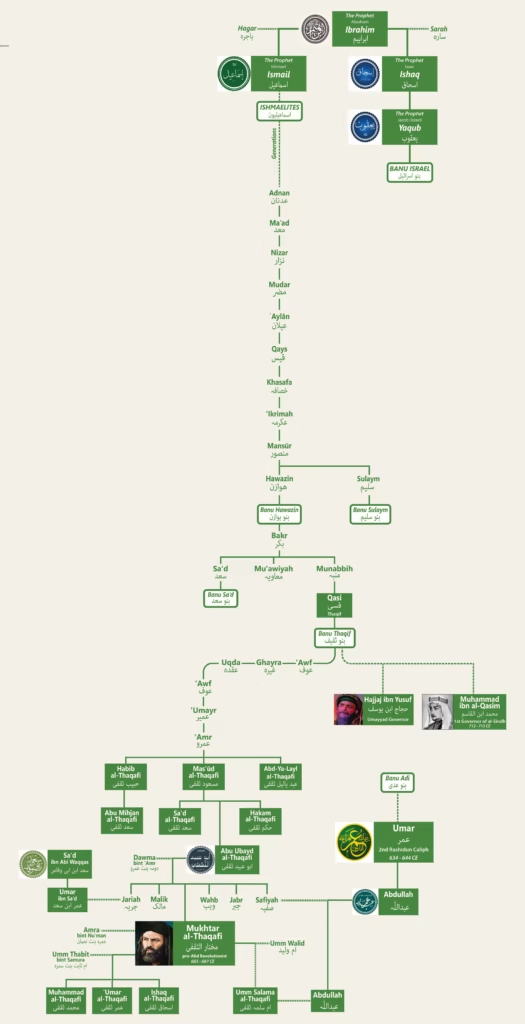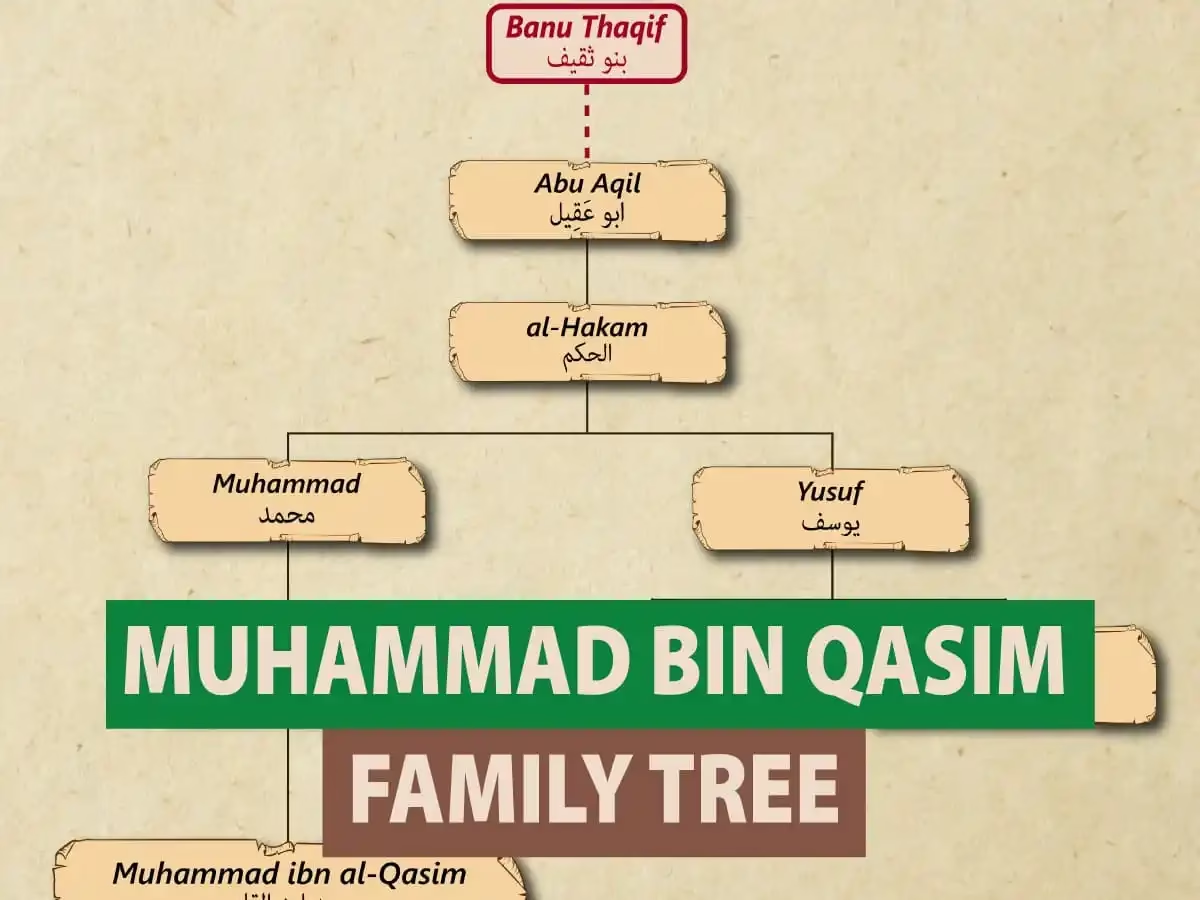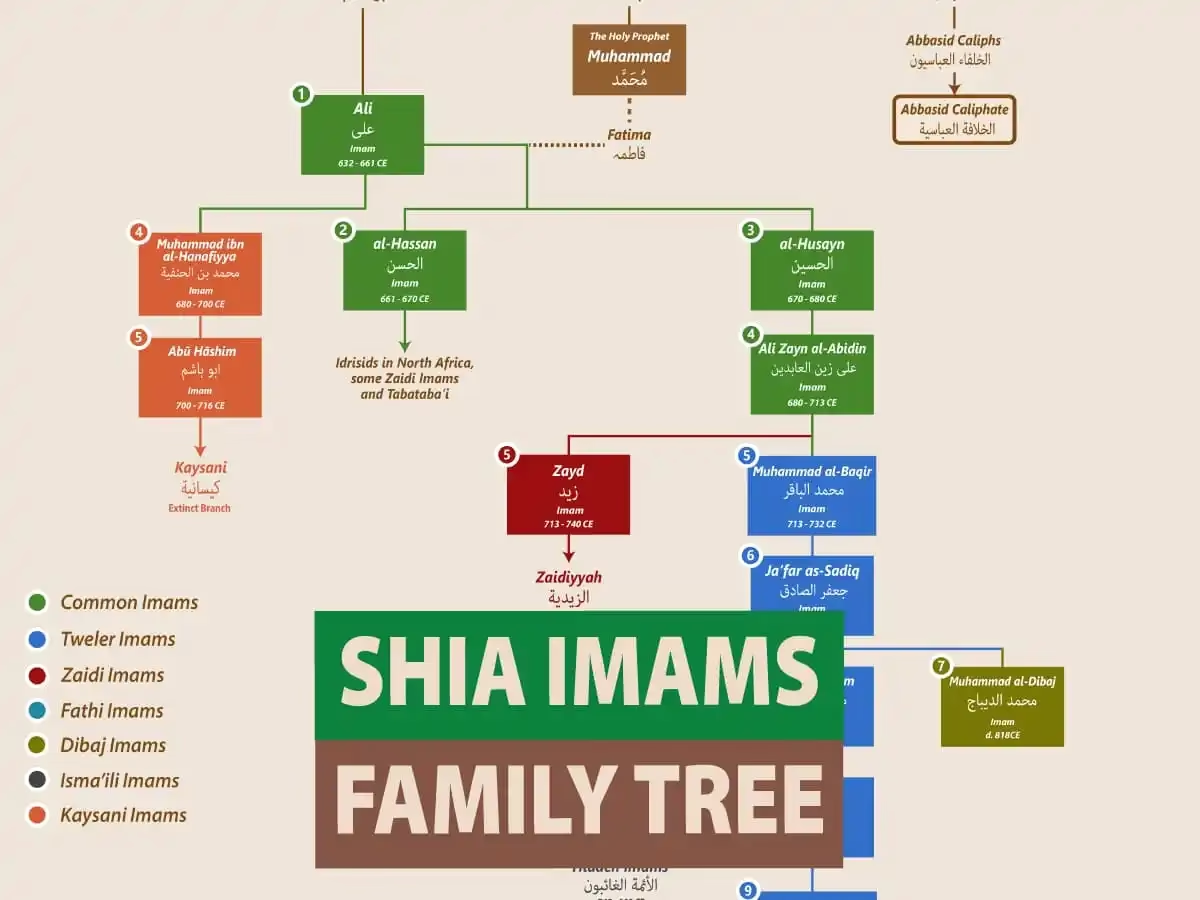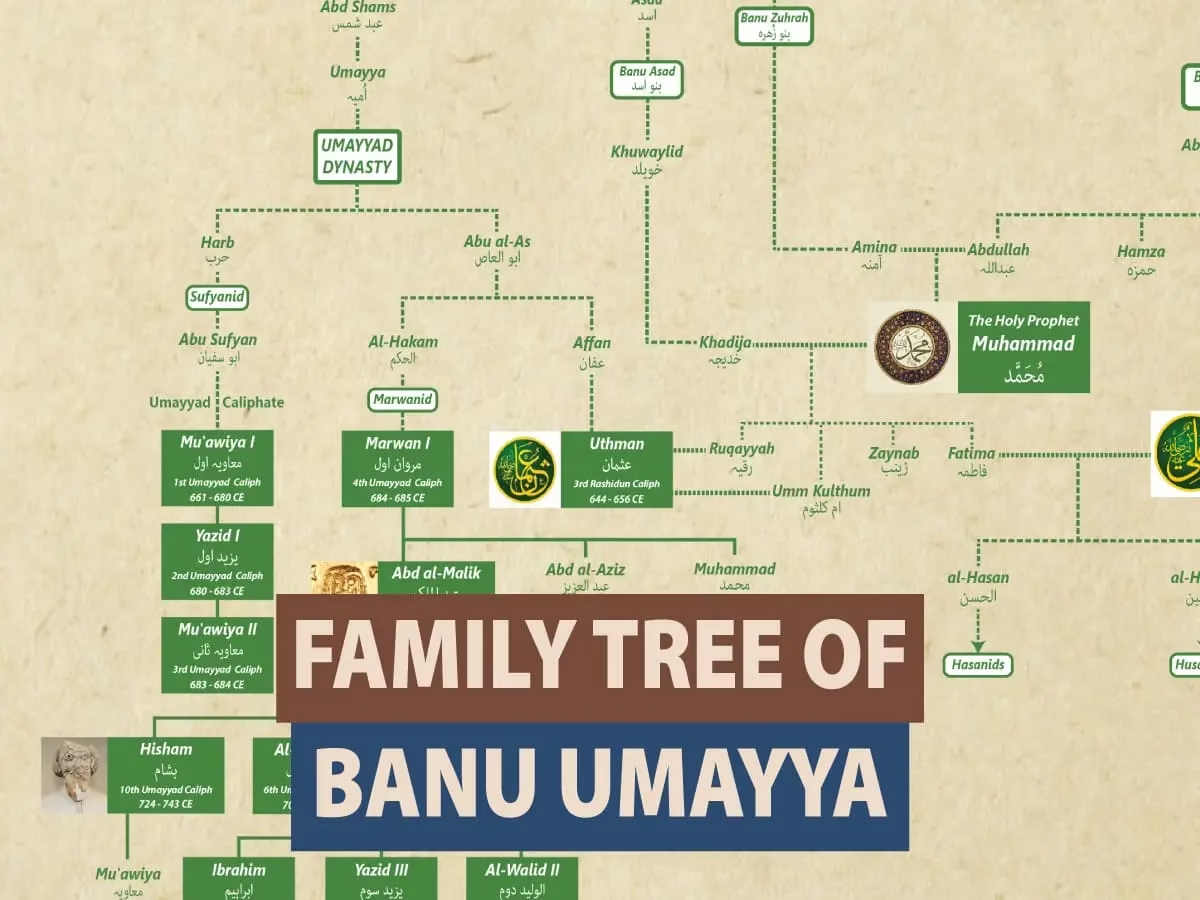Mukhtar al-Thaqafi, a name that echoes through the corridors of Islamic history, was not just a revolutionary who sought to avenge the tragedy of Karbala—he was a man rooted in a noble lineage, tied to both power and piety. His ancestry tells the story of ancient Arabian tribes, pre-Islamic alliances, early Islam, and political upheaval.
From Prophet Ibrahim to Prophet Ismail
The family tree of Mukhtar al-Thaqafi stretches all the way back to Prophet Ibrahim (Abraham) through his son Ismail (Ishmael). This puts Mukhtar among the Ishmaelites —the same line that leads to Prophet Muhammad (PBUH). Though Mukhtar was not a Hashemite (from the direct family of the Prophet), his ancestry follows the broader Adnani Arab lineage.
Tribal Descent: From Adnan to Qays
After Prophet Ismail, the family line descends through Adnan, then Ma’ad, Nizar, and eventually to Qays, a prominent figure whose descendants formed powerful tribes across Arabia.
From Qays, the line goes through Khasafa, ‘Ikrimah, and Mansur, ultimately reaching Hawazin—one of the most respected and powerful tribal federations in western Arabia. Mukhtar’s specific clan, Banu Thaqif, emerged from the children of Qasi ibn Munabbih, under the wider umbrella of the Hawazin tribes.
Banu Thaqif
According to Arab historians, Mukhtar’s tribe was Banu Thaqif, descending from a man named Qasi ibn Munabbih ibn Bakr, whose title was “Thaqif.” His descendants became known as the Banu Thaqif.
The Thaqif tribe, based in the city of Ta’if, was well-known for its intelligence, strategic warfare, and poetic culture. They were neither obscure nor passive—many of their members played vital roles in the early Islamic and Umayyad periods.
Interestingly, in the 7th century, notable Umayyad figures like Hajjaj ibn Yusuf and his nephew Muhammad ibn Qasim were also from this same tribe.

See Also: Twelve Imams Family Tree
Mukhtar’s Immediate Family
Abu Ubayd al-Thaqafi: Father of Mukhtar
Mukhtar’s father, Abu Ubaid al-Thaqafi, was a respected military commander. He was appointed by Caliph Umar ibn al-Khattab to lead the Muslim forces during the early conquests of Iraq. He was martyred at the Battle of the Bridge (al-Jisr) in 634 CE while fighting the Sassanid Empire near the Euphrates River. His death made a profound impact on Mukhtar’s life and future political vision.
Abu Ubayd al-Thaqafi married Dawmah bint Amr, and he had several children.
Al-Hakam ibn Mas’ud al-Thaqafi
Al-Hakam, who was martyred in the Battle of the Bridge against the Sassanids.
Sa’d ibn Mas’ud al-Thaqafi
Another prominent member of the family was Sa’d ibn Mas‘ud, a companion of the Prophet Muhammad and an administrator during Caliph Umar’s rule. His connection to Mukhtar reveals the political depth of the Thaqafi family in the early caliphate.
Mukhtar ibn Abi Ubaid al-Thaqafi – The Revolutionary
Early Life
Born in 622 CE in Ta’if, Mukhtar ibn Abi Ubaid was raised in a politically charged atmosphere. His family’s military legacy and connections to both Arab nobility and early Islam shaped his worldview. He spent time in Kufa and Medina and later built relations with key figures from the Prophet’s family (Ahl al-Bayt).
Role in Avenging Karbala
Following the martyrdom of Imam Husayn ibn Ali in the Battle of Karbala (680 CE), Mukhtar positioned himself as a leader of the pro-Alid movement. In 685 CE, he led a revolt in Kufa claiming to act on behalf of Muhammad ibn al-Hanafiyyah, a son of Imam Ali and half-brother of Imam Hasan and Imam Husayn.
Mukhtar’s rebellion became a symbol of justice for the Karbala tragedy. He executed many of those responsible for killing the Ahl al-Bayt, including Umar ibn Sa’d and Shimr ibn Dhil-Jawshan.

See Also: Banu Hashim and Karbala Martyrs: Family Tree of Imam Hussain
Key Supporters: Mawali and Shia
Mukhtar gained support from the Mawali (non-Arab Muslims) and Shia partisans who sought justice for the family of the Prophet. His egalitarian message and defense of Ahl al-Bayt gave him wide popularity among marginalized groups.
Death and Legacy
In 687 CE, Mukhtar was killed in battle by the forces of Mus’ab ibn al-Zubayr, the brother of Abd Allah ibn al-Zubayr. Although his political movement ended, his legacy endured as a revolutionary who stood for justice and the rights of the oppressed.
Connections to Ahl al-Bayt
Mukhtar’s life is deeply interwoven with the history of the Ahl al-Bayt. He is remembered in many historical and religious traditions as a devoted supporter of Imam Husayn and the family of Prophet Muhammad. Shia Muslims often regard him as a hero who avenged the tragedy of Karbala.
Mukhtar’s Wives and Children
Mukhtar had two wives: Umm Thabit and ‘Amrah.
- Umm Thabit opposed Mukhtar and was spared. She bore him three sons Muhammad, Ishaq, and ‘Umar.
- ‘Amrah supported Mukhtar and was imprisoned and later executed by Mus’ab ibn Zubayr, accused of claiming her husband was a prophet. She is said to be the first Muslim woman beheaded in Islamic history.
He also had a third wife, Umm al-Waleed, who bore him a daughter, Umm Salamah, who married Abdullah ibn Abdullah, grandson of Caliph Umar ibn Al-Khattab.
Connection to Caliph Umar ibn Al-Kattab
Mukhtar’s sister Safiyyah married Abdullah ibn Umar, son of Caliph Umar, linking the Thaqafis to the Banu Adi clan.
Connection to Umar ibn Sa’d
Mukhtar’s another sister, Jariyah, married Umar ibn Sa’d, the commander of the Umayyad army at Karbala—who was later executed by Mukhtar.



